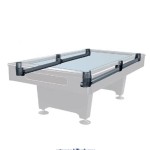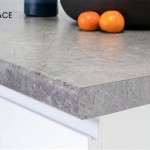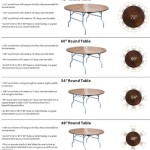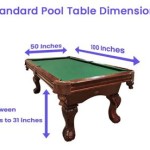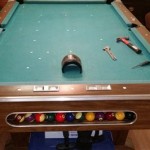How To Set Up A Pool Table Triangle
Setting up the pool ball triangle, often referred to as "racking," is a fundamental skill in the game of pool. A properly racked triangle is crucial for ensuring a fair and consistent break, which can significantly influence the outcome of the game. This process involves organizing the fifteen pool balls in a specific arrangement, ensuring that they are tightly packed and positioned correctly on the table. A poorly executed rack can lead to loose balls, clustered formations, and an inconsistent break, potentially giving one player an unfair advantage.
The objective of the rack is to create a tight, uniform structure. Ideally, the balls should be pressed together so firmly that when the triangle is removed, the balls remain briefly in their formation before naturally settling. This tightness ensures that the energy from the cue ball is distributed evenly throughout the rack during the break shot. This article provides a comprehensive guide on how to correctly set up a pool table triangle, addressing common mistakes and offering practical tips for achieving a professional-quality rack.
Key Point 1: Gathering the Necessary Equipment and Understanding the Ball Arrangement
The primary equipment required for setting up the pool table triangle is, of course, the triangle itself and a full rack of fifteen standard pool balls. Pool ball triangles are typically made of plastic or wood and come in various sizes to accommodate different ball sizes. Ensure the triangle is appropriate for the size of the pool balls being used; using an incorrect size can hinder the tightness of the rack.
The arrangement of the balls within the triangle follows a specific pattern. The 1-ball is always placed at the apex of the triangle, positioned on the foot spot on the table (the designated mark on the cloth). The foot spot is usually indicated by a small dot or emblem on the table. This placement of the 1-ball is not merely arbitrary; it is a standard rule in most variations of pool and ensures a consistent starting point for the break.
The 8-ball must be located in the center of the triangle, ensuring it is not on either of the back corners. Its central position adds an element of chance and strategic consideration to the break. If the 8-ball is pocketed on the break shot, certain rules apply, often resulting in either a re-rack or loss of game, depending on the specific rules being played.
The two back corners of the triangle must consist of one striped ball and one solid ball. This requirement is often enforced in 8-ball pool to prevent one player from easily identifying and targeting their specific type of ball (stripes or solids) during the break. The remaining twelve balls are placed randomly within the triangle, filling the remaining spaces. The objective is to minimize any large gaps between the balls to promote a tight rack. Avoid intentionally ordering or clustering specific balls together, as this compromises the fairness and randomness of the game.
Key Point 2: The Racking Process: Steps for Achieving a Tight Rack
Once the equipment is gathered and the ball arrangement is understood, the racking process itself can begin. The initial step involves placing the triangle on the foot spot. Align the triangle carefully, ensuring that the apex (where the 1-ball will be positioned) is precisely on the foot spot. The base of the triangle should be parallel to the foot rail (the short rail at the foot of the table).
Next, place the 1-ball at the apex of the triangle, directly on the foot spot. Ensure the ball is snug against the inside of the triangle. This ball serves as the anchor for the entire rack. Follow this by placing the 8-ball in the center of the triangle, ensuring it is surrounded by other balls. Then, place one stripe and one solid ball on the back corners.
Fill the remaining spaces within the triangle with the other twelve balls, randomly distributed. As the balls are placed, pay attention to the gaps between them. Gently push the balls together, trying to eliminate as much space as possible. This can be achieved by slightly rotating or nudging the balls until they are in contact with their neighbors. The goal is to create a firm, interconnected structure.
Once all the balls are in place, apply gentle but firm pressure to the top of the triangle, pushing the balls downward towards the foot spot. This helps to further tighten the rack. Then, carefully remove the triangle by lifting it straight up and away from the balls, ensuring not to disturb the balls' formation. A properly racked triangle should leave the balls briefly in formation before naturally settling against each other.
If the balls scatter significantly or large gaps remain after the triangle is removed, the rack was not sufficiently tight. The process should be repeated, paying closer attention to eliminating gaps and applying pressure while the triangle is in place. Practicing this process repeatedly will improve accuracy and consistency in creating tight racks.
Key Point 3: Common Racking Mistakes and How to Avoid Them
Several common mistakes can hinder the quality of the rack. One frequent error is failing to place the 1-ball directly on the foot spot. This misalignment can affect the break shot's trajectory and distribution of energy, potentially impacting the game's outcome. To avoid this, carefully locate the foot spot and visually confirm that the 1-ball is precisely positioned on it.
Another common mistake is neglecting to arrange the 8-ball in the center, and a stripe and solid on the back corners. This is a fundamental rule in 8-ball pool, and failing to adhere to it can lead to disputes and require a re-rack. Always double-check the positioning of these specific balls before removing the triangle to ensure compliance with the rules.
Insufficient tightness within the rack is a prevalent issue. Gaps between the balls can result in an uneven break, as the cue ball's energy is not distributed uniformly throughout the rack. Ensure that the balls are pressed together as tightly as possible, eliminating any visible gaps. Applying pressure from the top of the triangle can help achieve this.
Using a damaged or warped triangle can also negatively affect the rack. An uneven triangle will not properly compress the balls, leading to inconsistencies. Regularly inspect the triangle for any signs of damage or warping and replace it if necessary. Investing in a high-quality triangle made of durable material can improve the racking process.
Rushing the racking process is another common pitfall. Taking the time to carefully arrange the balls and ensure a tight rack will ultimately improve the overall quality of the game. Avoid rushing through the process, and focus on precision and attention to detail. With practice, speed and accuracy will improve in tandem.
Finally, inconsistent pressure when removing the triangle can disrupt the formation. Lift the triangle straight up and away from the balls with a smooth, even motion. Avoid jerking or tilting the triangle, as this can cause the balls to scatter. Practicing the removal technique will help ensure a clean, consistent rack.

How To Rack A Pool Table 10 Steps With S Wikihow

How To Rack A Pool Table 10 Steps With S Wikihow

The Official 8 Ball Rack Setup Proper Way Explained

How To Rack A Pool Table 10 Steps With S Wikihow Balls

How To Rack Up Pool Balls Hamilton Billiards Snooker Blog

Rack Em Up The Correct Way To Set Pool Balls Coach

How To Rack Up Pool Balls Hamilton Billiards Snooker Blog

How To Rack A Pool Table

Eight Ball Wikipedia

Official Way To Rack Up 8 Ball Pool Life S Tv
Related Posts

